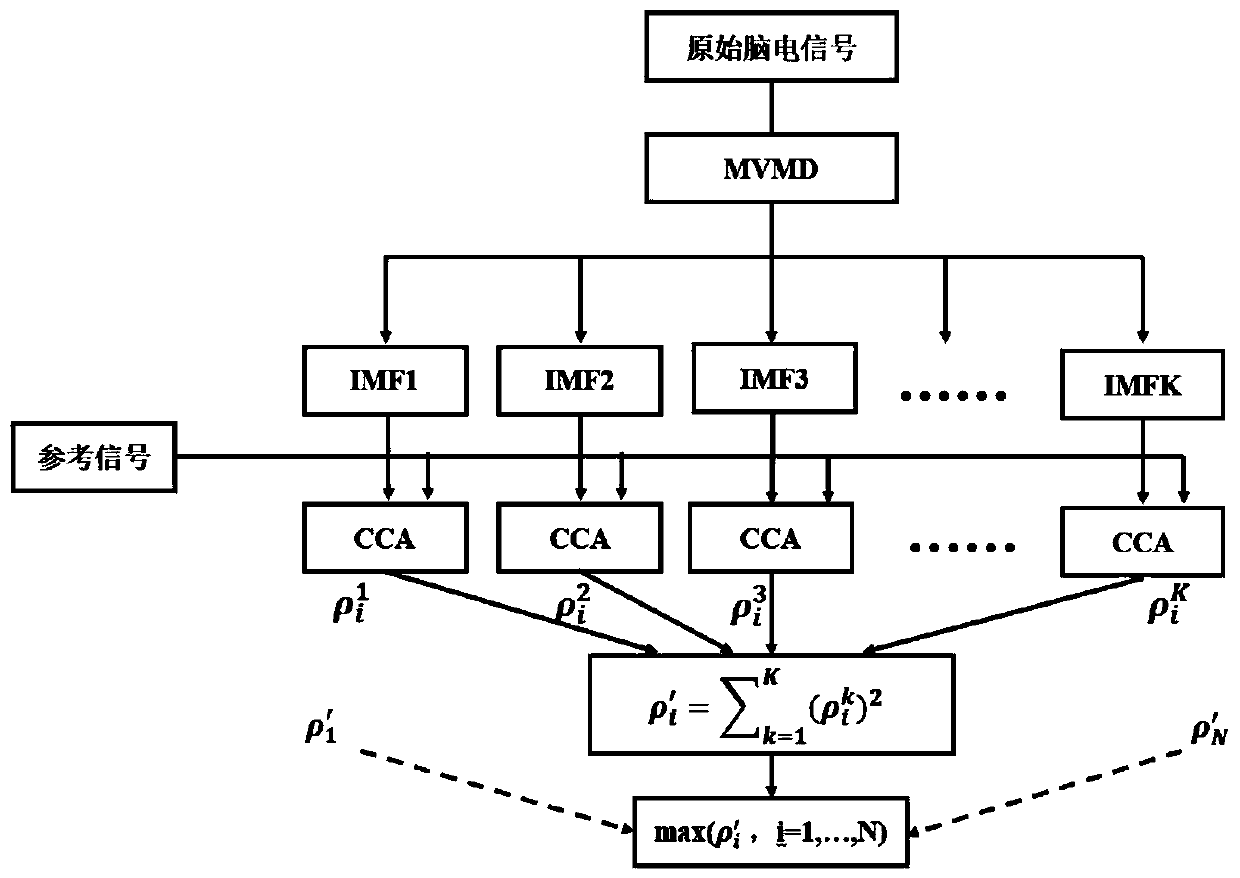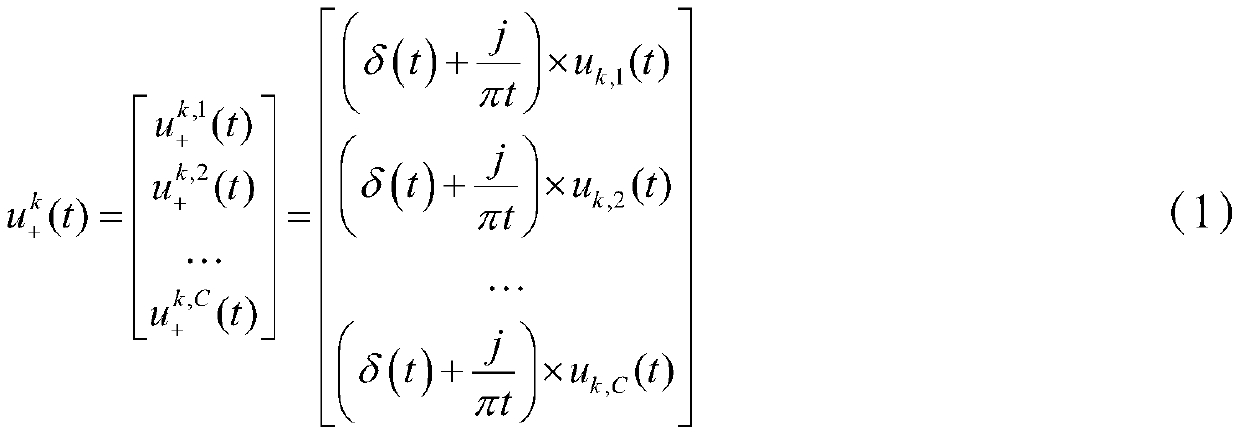SSVEP electroencephalogram signal recognition method based on MVMD-CCA
A technology of MVMD-CCA and EEG signals, applied in the field of pattern recognition, can solve the problems of large influence and low classification accuracy
- Summary
- Abstract
- Description
- Claims
- Application Information
AI Technical Summary
Problems solved by technology
Method used
Image
Examples
Embodiment Construction
[0055] The present invention will be described in detail below with reference to the accompanying drawings and examples.
[0056] The present invention provides the SSVEP EEG signal recognition method based on MVMD-CCA, its principle is as follows figure 1 shown, including the following steps:
[0057] S1. Collect multi-channel steady-state visual evoked potential SSVEP EEG signals as the EEG signals to be identified. In the embodiment of the present invention, a multi-lead electrode cap is used to collect EEG signals stimulated by SSVEP as EEG signals to be identified.
[0058] S2. Set the number K of components with decomposition, construct a variational problem, and use the ADMM algorithm to solve the variational problem, and decompose the EEG signal to be identified into K multivariate modulation components.
[0059] S3. Define a reference signal according to the visual stimulation frequency that induces the EEG signal to be recognized.
[0060] S4. Find the specific st...
PUM
 Login to View More
Login to View More Abstract
Description
Claims
Application Information
 Login to View More
Login to View More - R&D
- Intellectual Property
- Life Sciences
- Materials
- Tech Scout
- Unparalleled Data Quality
- Higher Quality Content
- 60% Fewer Hallucinations
Browse by: Latest US Patents, China's latest patents, Technical Efficacy Thesaurus, Application Domain, Technology Topic, Popular Technical Reports.
© 2025 PatSnap. All rights reserved.Legal|Privacy policy|Modern Slavery Act Transparency Statement|Sitemap|About US| Contact US: help@patsnap.com



